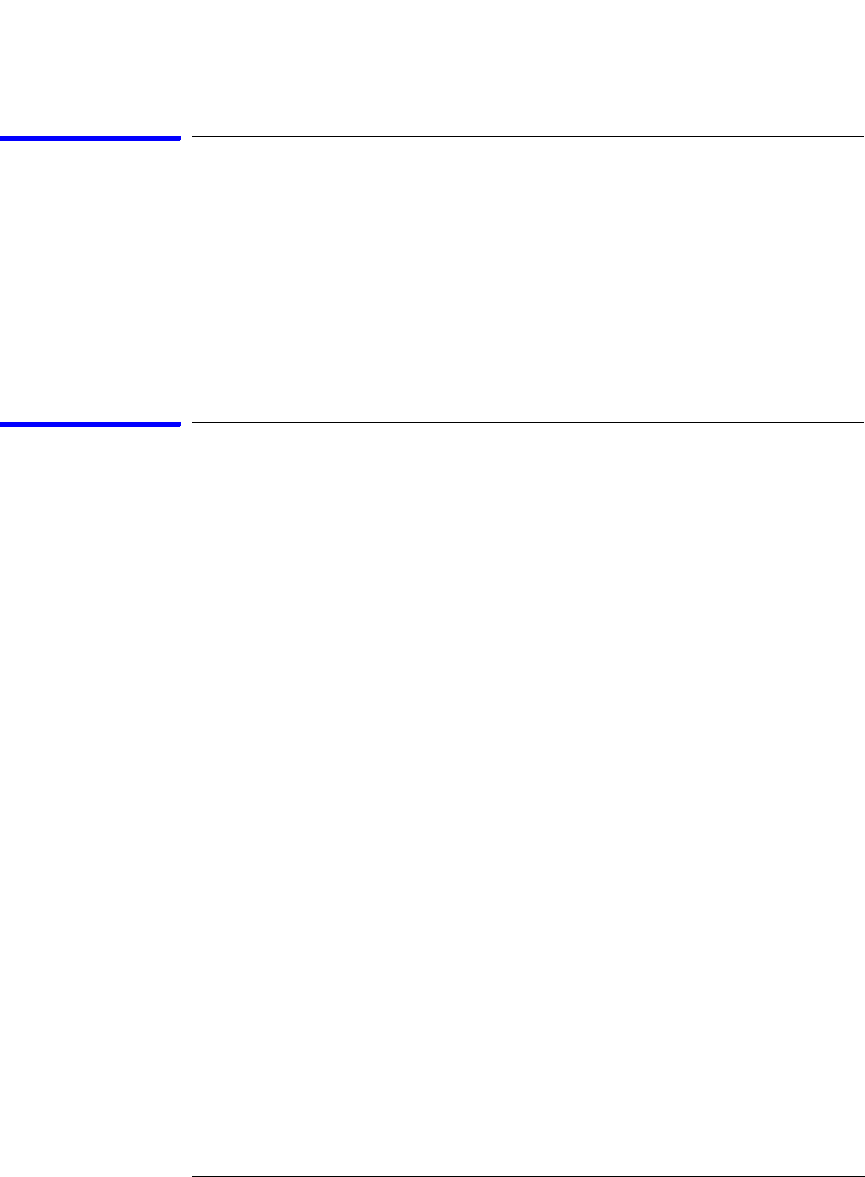User's Manual
Table Of Contents
- Agilent Technologies 16750A/B Logic Analyzer
- Agilent Technologies 16750A/B Logic Analyzer
- Contents
- Getting Started
- Step 1. Connect the logic analyzer to the device under test
- Step 2. Choose the sampling mode
- Step 3. Format labels for the probed signals
- Step 4. Define the trigger condition
- Step 5. Run the measurement
- Step 6. Display the captured data
- For More Information...
- Example: Timing measurement on counter board
- Example: State measurement on counter board
- Task Guide
- Probing the Device Under Test
- Choosing the Sampling Mode
- To select transitional timing or store qualified
- Formatting Labels for Logic Analyzer Probes
- Setting Up Triggers and Running Measurements
- Displaying Captured Data
- Using Symbols
- Printing/Exporting Captured Data
- Cross-Triggering
- Solving Logic Analysis Problems
- Saving and Loading Logic Analyzer Configurations
- Reference
- The Sampling Tab
- The Format Tab
- Importing Netlist and ASCII Files
- The Trigger Tab
- The Symbols Tab
- Error Messages
- Must assign Pod 1 on the master card to specify actions for flags
- Branch expression is too complex
- Cannot specify range on label with clock bits that span pod pairs
- Counter value checked as an event, but no increment action specified
- Goto action specifies an undefined level
- Maximum of 32 Channels Per Label
- Hardware Initialization Failed
- Must assign another pod pair to specify actions for flags
- No more Edge/Glitch resources available for this pod pair
- No more Pattern resources available for this pod pair
- No Trigger action found in the trace specification
- Slow or Missing Clock
- Timer value checked as an event, but no start action specified
- Trigger function initialization failure
- Trigger inhibited during timing prestore
- Trigger Specification is too complex
- Waiting for Trigger
- Analyzer armed from another module contains no "Arm in from IMB" event
- Specifications and Characteristics
- Concepts
- Understanding Logic Analyzer Triggering
- Understanding State Mode Sampling Positions
- Getting Started
- Glossary
- Index

171
Chapter 3: Reference
Error Messages
Must assign Pod 1 on the master card to specify
actions for flags
When using a 16760A analyzer in 200Mb/s state mode, Pod 1 on the
master card must be assigned in order to add actions for the flags in a
branch action list. To assign the pod, go to the format tab and select the
"Pod Assignment" button. Drag Pod 1 of the master card from the
unassigned pods list to the analyzer assigned list.
Branch expression is too complex
The "Branch expression is too complex" message means that the event
list expression for the indicated branch contains more event terms to
logically combine than the hardware is capable of combining on a single
branch.
Other branches in the sequence may also be too complex. The trigger
sequence compiler stops compiling at the first convenient place after it
encounters a fatal error.
Because the trigger sequence compiler tries to optimize the event list
expression to best fit the capabilities of the hardware, a precise
description of the event list limits cannot be easily enumerated, but
listed below are some general guidelines for all acquisition modes and
some specific suggestions for particular modes.
General Guidelines
• Labels that span multiple pod pairs (split labels) greatly increases the
compiled hardware expression complexity as compared with labels that
are entirely contained within a single pod pair.
Whenever possible try to arrange the probing such that labels to not span
pod pairs. This is the single most effective way to reduce the complexity
required to implement the event list expression.










